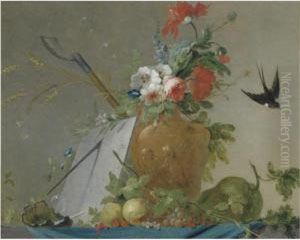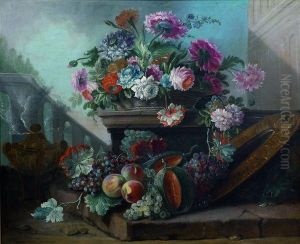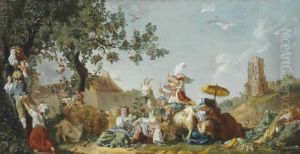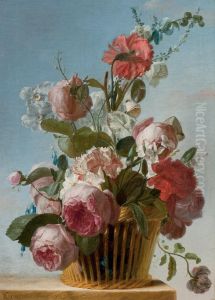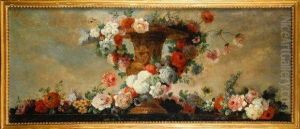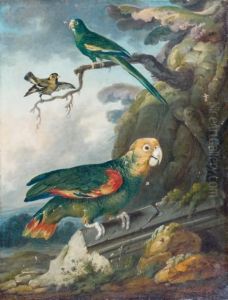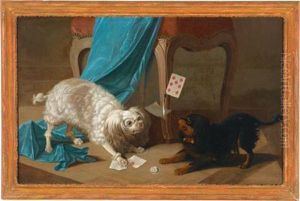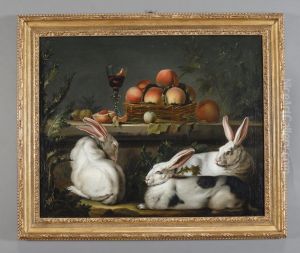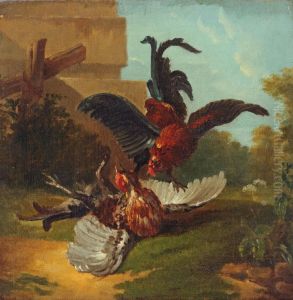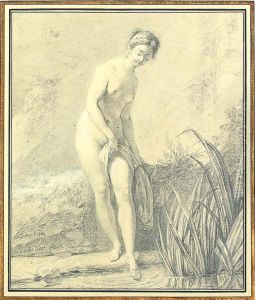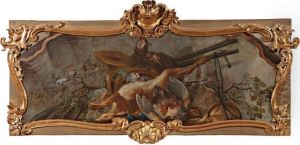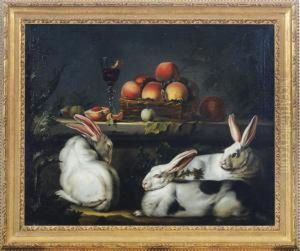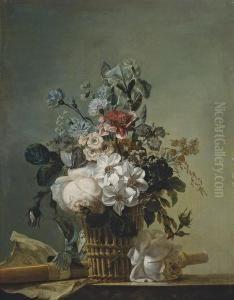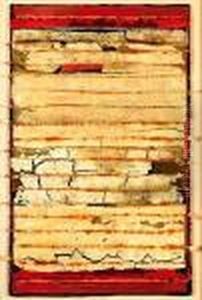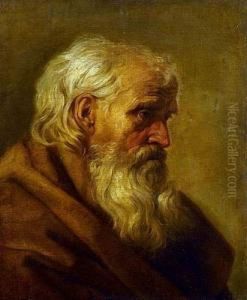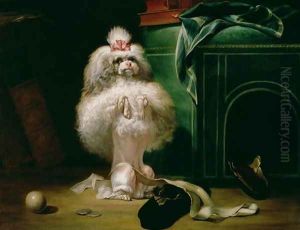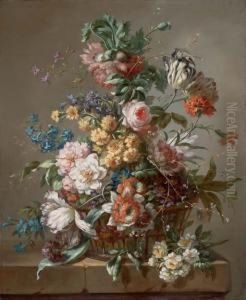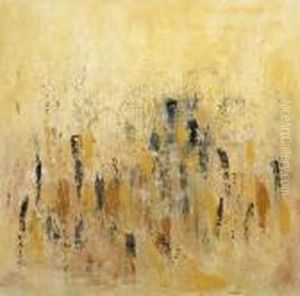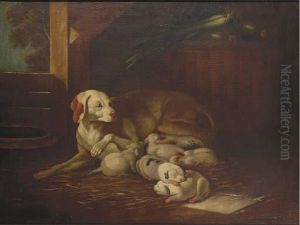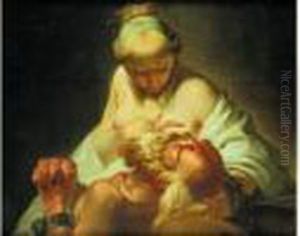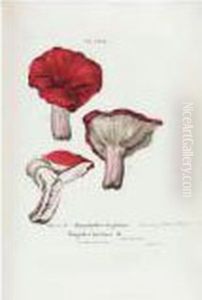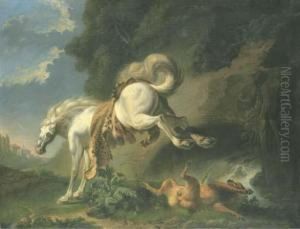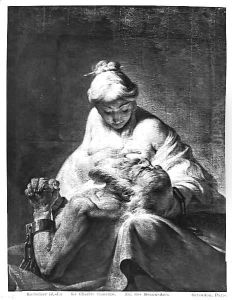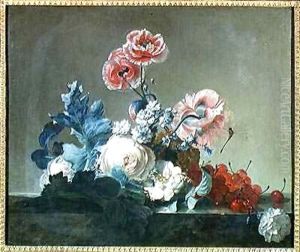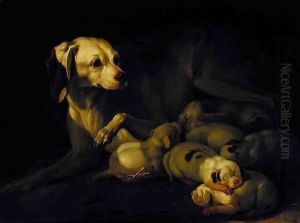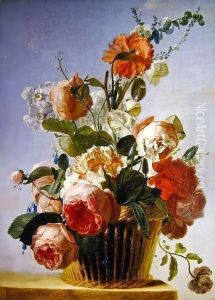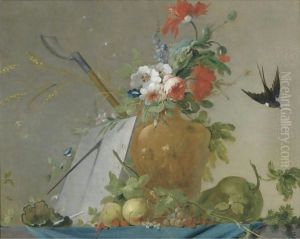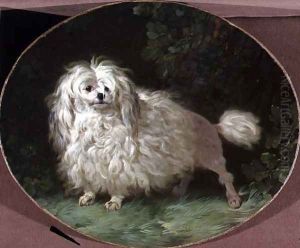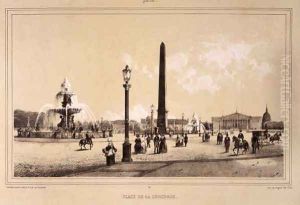Jean Jacques Bachelier Paintings
Jean Jacques Bachelier was a French painter and teacher born in Paris in 1724. He is best known for his work as a floral painter, although he also produced a number of genre paintings, portraits, and animal scenes throughout his career. Bachelier’s talent for capturing the delicate intricacies of flowers and his exquisite attention to detail earned him considerable recognition during his lifetime.
Bachelier received his early training at the Académie Royale de Peinture et de Sculpture, where he studied under notable artists like Jean-Baptiste Oudry. He gained admission to the Académie in 1752, where he exhibited his artworks regularly. His paintings, particularly his floral pieces, were praised for their realistic representation and vibrant color palette. Bachelier's floral compositions often included a variety of flowers in a single vase, showcasing his extensive knowledge of botany and his skillful use of colors and textures.
In addition to his painting career, Bachelier was also an influential educator. He taught at the École Royale Gratuite de Dessin (Royal Free School of Design), which was later known as the École Nationale Supérieure des Arts Décoratifs (National School of Decorative Arts). His teaching had a significant impact on the next generation of French artists, especially those who would contribute to the decorative arts.
Jean Jacques Bachelier's contributions to the French art world extended beyond his own artwork. He was appointed director of the porcelain factory at Vincennes in 1751, and later at Sèvres in 1756, where he played a key role in developing new techniques and designs for porcelain manufacturing. His tenure at these prestigious institutions helped to elevate the status of French porcelain on the international stage.
Despite his successful career, Bachelier faced challenges during the French Revolution, a tumultuous time that upended the traditional patronage systems and institutions that had supported artists. Nevertheless, he continued to work and exhibit his art whenever possible.
Bachelier's works are held in various museum collections, including the Louvre in Paris and the Museum of Fine Arts in Boston. He passed away in 1806, leaving behind a legacy as a master of floral painting and a significant figure in the development of French decorative arts. His influence persisted through his students and the continued appreciation of his art well into the 19th century and beyond.
